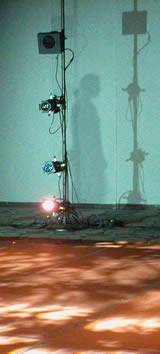 |
 |
 |
|
|
Tips for Considering Lighting Software
GJF Lighting designers were among the first theatre artists to embrace computer technology. Lighting design lent itself readily to the advantages that computers provided, and computer assistance in the design process seemed a natural extension given the use of computers in the operation of lighting consoles. While early programs limited themselves to the paperwork functions of design, including drafting and database-type management of the design information, many current programs include design aids such as the visualization of the effect a given lighting instrument will produce from a specific position. Two early leaders in lighting application were AutoCAD and Lightwright, originally named ALD (Assistant Lighting Designer). AutoCAD was, and still is, a very powerful broad-based program that is applicable to many different applications. A major advantage is its ability to be customized allowing it to be configured to specific uses such as lighting design. Its major drawbacks are its high price and the steep learning curve to become productive with the program, especially to customize it for stage lighting. Lightwright was one of the first programs written specifically for lighting applications by a working lighting designer. This database-type program has remained the standard for managing lighting paperwork. While these two programs continue to be used for stage lighting, a number of new applications are currently available to offer additional power and flexibility to the designer. Programs such as Vectorworks Spotlight, LD Assistant, and WYSIWYG offer specific tools for the lighting designer beyond paperwork tools. In addition to libraries of standard lighting symbols, programs such as these can also provide photometric information for an instrument at a specific angle and distance. They can also provide simulations of the qualities of light striking the stage and setting. Moving lights can also be accommodated in a variety of methods. While current programs typically include internal methods for managing paperwork, most programs also provide for exporting and importing lighting information to external programs such as Lightwright or spreadsheets such as Excel. Design programs such as these streamline the design process allowing the designer to explore lighting choices and options while visualizing the potential results. Once this process is complete, the drafted light plot is also complete and the paperwork can be generated. When subsequent changes are made to the design, the program updates all related plots and paperwork. If the designer is working with a fixed inventory, these programs can keep the designer updated on the status of the inventory. If no inventory exists, the programs can generate the appropriate shop orders. In selecting a program, the designer should consider a number of areas. First and foremost, the program should allow the designer to work in the manner of his or her choosing. The designer must also consider the overall cost and ease of learning the program. Features that are not needed by the designer may add unnecessary costs and complexity to the program. Compatibility with the other designers that you collaborate with is also an issue. Ideally, the lighting designer should be able to exchange files with the scenic designer and technical director. Many programs either support different file types or can work from a more standard graphic format such as the DXF file format developed by AutoCAD. Keep in mind that many of the unique aspects of the program may be lost if the file is saved in a generic format. The Lighting Commission will sponsor a session on lighting software at the Long Beach 2004 Conference & Stage Expo in March. This will provide an opportunity to evaluate and compare various programs. Check the conference program for details. |

In addition to sponsoring interesting panels and
presentations including the one about Lighting Software mentioned in this
article, the Lighting Commission will sponsor the Light Lab during USITT's 2004
Annual Conference & Stage Expo.
To see full picture (63 KB) from the 2003 Light
Lab click here. |